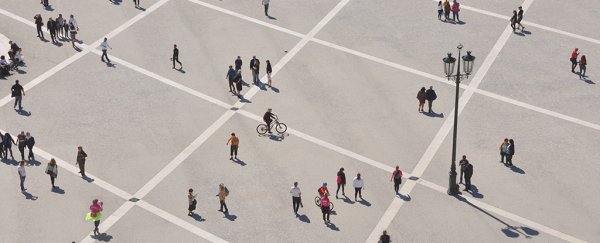It's been a year like no other for studying pandemics. Now, new research offers an intriguing suggestion for slowing the spread of infections: by getting people to relocate away from large cities, rather than sealing off borders.
Applying commonly used SIR (susceptible, infected, and recovered) dynamics, researchers ran some 10,000 simulations looking at one-way migration from a densely populated area to a lightly populated area while a disease is spreading.
The overall infection rate was reduced if the populations mixed, the stats showed, although the infection rate in the lightly populated area did go up. If movement was forced away from the densely populated area, the overall infection rate dropped further.
"Instead of taking mobility, or the lack of mobility, for granted, we decided to explore how an altered mobility would affect the spreading," says data scientist Massimiliano Zanin, from the Institute for Cross-Disciplinary Physics and Complex Systems (IFISC) in Spain.
Assuming 90 percent of people begin in a densely populated area like a city, and 10 percent begin in a lightly populated area such as a village, the study showed overall infection rates could be reduced from around 35 percent of the population to around 23 percent if people were allowed to move freely.
And while the percentage of infected people in our hypothetical village would go up as a result, the drop in the percentage of infected people in our hypothetical city would go down by a greater amount, the researchers found.
The negative impact on the smaller community can be mitigated by health checks at the border, by only allowing healthy people to relocate, and by limiting the movement of relocated people, the researchers say.
If people are allowed to move back and forth between their old and new homes the benefits are reduced, the study shows.
"People always assume that closing borders is good," says Zanin. "We found that it is almost always bad."
As Zanin is keen to point out, this is just a model of movement, without the complexity and unpredictability of real life. A whole host of assumptions – including reinfection and immunity rates, behaviour patterns and so on – have been made to generate the numbers.
With that in mind, modelling studies like this can't give definitive answers, but they can put forward some useful suggestions – and it would seem that keeping people confined in place could be worse for overall infection rates, even if it does allow some regions to stay relatively free from disease.
In the real world, allowing people to relocate from a main city home to a village holiday home might stop the spread of disease, the researchers say, as long as there was no going back until the pandemic was over.
Of course there are many other economic and social considerations to think about besides the infection rate – not least whether city dwellers would be keen to move out or whether village dwellers would be happy to have them – which highlights the difficult job that governments have in managing the spread of coronavirus.
"Collaboration between different governments and administrations is an essential ingredient towards controlling a pandemic, and one should consider the possibility of small-scale sacrifices to reach a global benefit," says Zanin.
The research has been published in Chaos.
